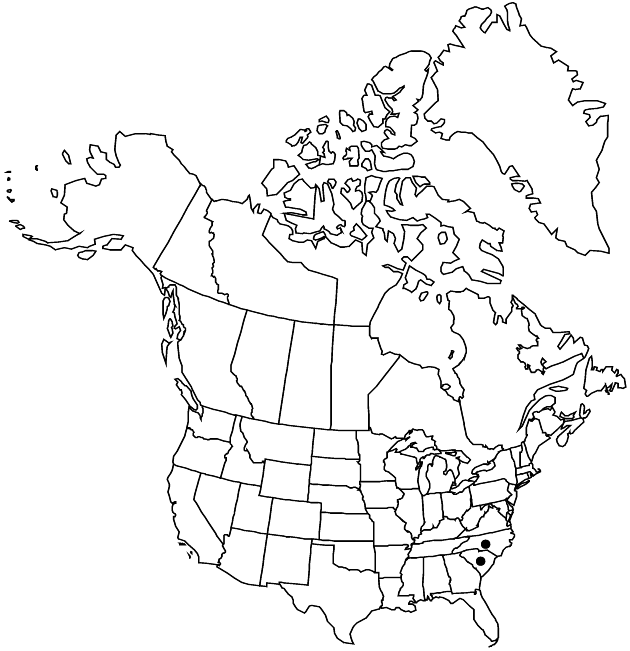Eurybia mirabilis
Phytologia 77: 261. 1995.
Plants 30–120 cm; not strongly colonial or in clumps, not or barely stipitate-glandular; rhizomes coarse, short, woody. Stems 1–3+, erect, slightly flexuous, simple, sparsely strigose proximally or glabrescent, densely strigose distally. Leaves basal and cauline, margins crenate-serrate, teeth mucronate, margins scabrous to strigoso-ciliate, apices acute to obtuse, ± acuminate, mucronate, abaxial faces scabrous (short strigose), adaxial ± densely strigose; basal and proximal cauline long-petiolate, petioles not to narrowly winged, sheathing, blades ovate, 50–200 × 30–120 mm, bases shallowly cordate to rounded; cauline shortly, broadly winged-petiolate to subpetiolate or sessile, ovate or elliptic to lanceolate or oblanceolate, 13–122 × 6–55 mm, gradually reduced distally, bases auriculate, not clasping, or cuneate to winged-attenuate; distal (arrays) sessile, obovate or oblong to lanceolate, 10–32 × 4–10 mm, bases rounded to attenuate, apices obtuse to rounded or acute. Heads 3–10+ in loose, flat-topped, corymbiform arrays. Peduncles densely strigose, sometimes sparsely stipitate-glandular distally; bracts 0–2, broad, densely strigose. Involucres campanulate, 7–12 mm, shorter than pappi. Phyllaries 46–75 (–90) in 5–7 series, oblong-lanceolate (outer) to linear-lanceolate (inner), strongly unequal, membranous, bases indurate, rounded (outer), green zones in distal 1/3–1/2 foliaceous (outer) or 0 (innermost), margins hyaline, narrowly scarious, erose, ciliate, apices ± squarrose or reflexed, obtuse to acute and mucronulate (outer) or acuminate (inner), faces strigoso-villous to strigillose, eglandular. Ray-florets (7–) 16–20 (–30); corollas white to lavender, 10–15 × 1.4–2.1 mm. Disc-florets 20–40; corollas pale-yellow, becoming purplish-tinged on lobes, funnelform, slightly ampliate, 6–7.5 mm, tubes longer than throats, lobes spreading, lanceolate, 1–1.5 mm. Cypselae reddish-brown to brown, fusiform, compressed, 3–4 mm, ribs 7–12, faces sparsely strigillose; pappi of cinnamon (apically clavate) bristles, equaling disc corollas. 2n = 18.
Phenology: Flowering late summer–early fall.
Habitat: Deciduous or mixed deciduous woods, on slopes or alluvial plains, usually on basic or circumneutral soils, Piedmont Plateau
Elevation: 100–300 m
Discussion
Of conservation concern.
Eurybia mirabilis is infrequent throughout its range. It has been reported for Alabama and Georgia but no specimens were seen. Such reports may be based on specimens of E. jonesiae identified as Aster commixtus. Both species have been so identified.
Selected References
None.
Lower Taxa
"broad" is not a number."[" is not declared as a valid unit of measurement for this property."]" is not declared as a valid unit of measurement for this property.
